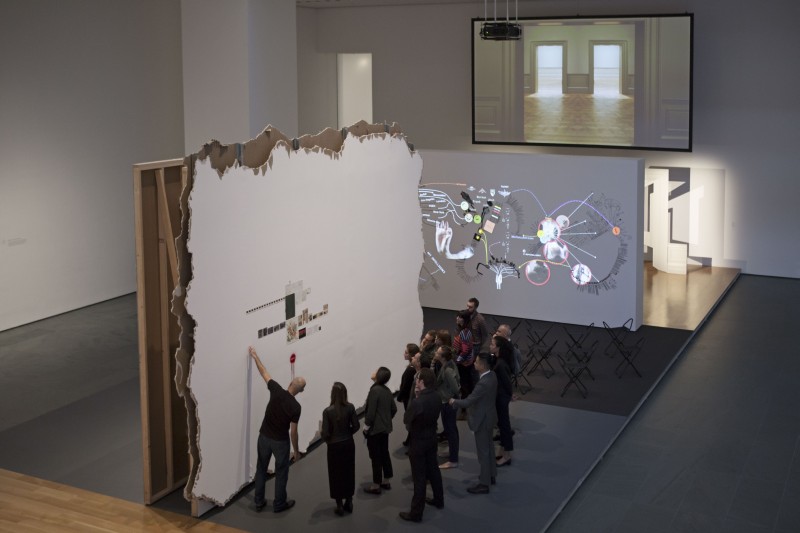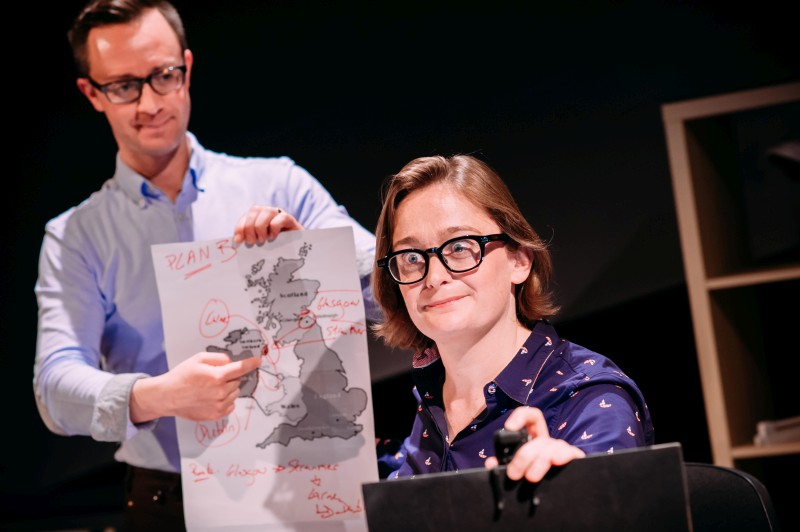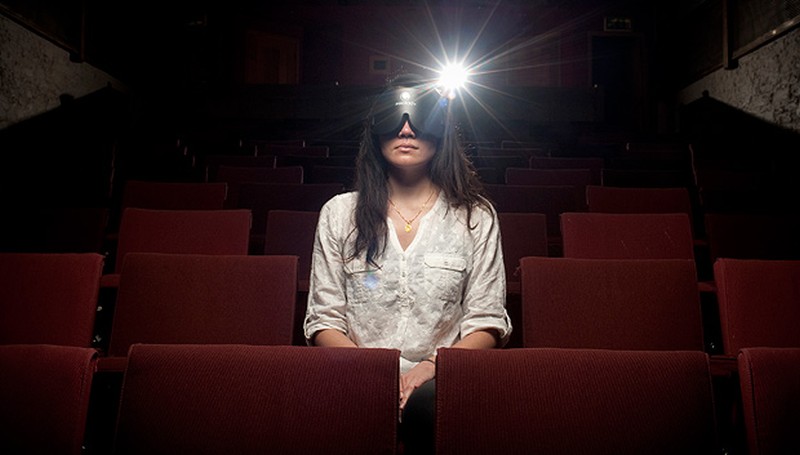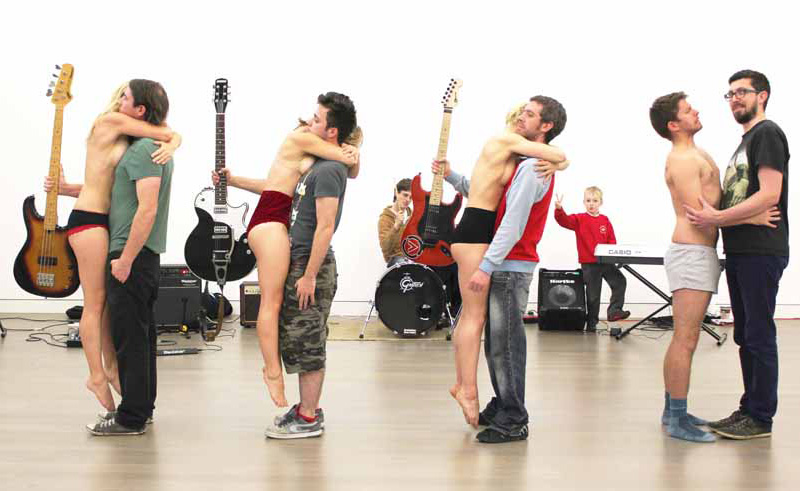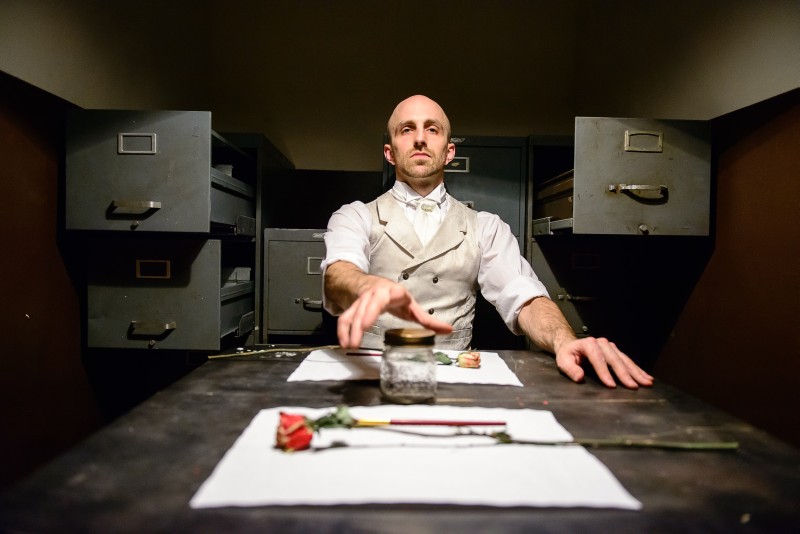 A blank-looking house on a Brooklyn street is the setting for Then She Fell, a long-running promenade piece that’s been drawing New York audiences for over three years now. Third Rail Projects, led by Zach Morris, Tom Pearson, and Jennine Willet, specialise in immersive work – something that appears to be much less common on this side of the ocean. It’s become so en vogue in the UK that I often begin my journeys with trepidation that the work is merely a gimmick trying to replicate the big hitters like dreamthinkspeak or Punchdrunk. Indeed, my own work with Dante or Die has been similarly approached by audiences and critics. Although how many productions of Hamlet are produced every year without comparison to each other?!
A blank-looking house on a Brooklyn street is the setting for Then She Fell, a long-running promenade piece that’s been drawing New York audiences for over three years now. Third Rail Projects, led by Zach Morris, Tom Pearson, and Jennine Willet, specialise in immersive work – something that appears to be much less common on this side of the ocean. It’s become so en vogue in the UK that I often begin my journeys with trepidation that the work is merely a gimmick trying to replicate the big hitters like dreamthinkspeak or Punchdrunk. Indeed, my own work with Dante or Die has been similarly approached by audiences and critics. Although how many productions of Hamlet are produced every year without comparison to each other?!
However, a dance-theatre piece in a period house, with cabinets of curiosities to explore galore and up-close and personal interaction… One can’t help but at least acknowledge the similarities. And now I shall move on, because that’s where the comparison can end. Third Rail invite only fifteen audience members per show into Kingsland Ward, a century-old institutional facility. Having had quite a stern but wry briefing about not opening any locked doors, given a set of keys and a shot of some rather bitter tasting booze, we’re separated into smaller groups or lone travellers. One of the joys of the piece is is that we have solitary moments with performers, and are then dumped into a room with three others, before being whisked behind another door to join a different audience member. My brain was frantically trying to work out the stage management and audience routes. Soon enough I gave up and just enjoyed the well-oiled, excellently crafted ride.
My first room set the scene. Our firm guide sits at a long table opposite me. She shoots a silver cup down the table towards me – I catch it. Suddenly she’s sliding across the table towards me and fills both our cups with bubbling cold liquid. We clink and drink. Before I know it she’s swiped the cup and darted to the other side of the table, returning to present a box with a lock. I fumble for my keys but none of them fit. She dangles a tiny, tiny key in front of my face – as I reach towards it she has already made it disappear and has popped it under a cup (there are now three). I finally get my hands on the key and open the box – a letter from Lewis Caroll to Alice Liddell.
Over two hours I meet two versions of Alice, a man embodying the white rabbit, Lewis Carroll himself, The Mad Hatter (brilliant), and nameless orderlies who now and then pop up to open another door for us. The building itself is not that large – we move only between three floors – but Third Rail have concocted a dizzying rabbit hole journey as we are commandingly landed into another space before revisiting spaces through a different door later. It really does feel like a dream that you have no control over; and yet we are made to feel incredibly safe and taken care of. I applaud their audience management and interaction – space is left for us to explore as well as interact with performers yet at the same time we are being brought on a very specific journey.
Highlights included combing Alice’s hair whilst talking about my first love, frantically trying to notate for the Mad Hatter who keeps changing her mind about what she should write, and a magical duet between two versions of Alice, each behind a two-way mirror. Cleverly, I was treated to seeing both angles of that delicate moment. The choreography (created by the original ensemble) is detailed and urgent; and importantly, is entirely specific to the space in which it is performed. Alice and Lewis’s duet on a staircase sees them both ascend and descend on an angle, and sinuously wrap around the banisters. It’s a beautiful moment that crystalises the impossible love story that Then She Fell handsomely shares with us. The overall experience is a nuanced exploration of love, madness and the fragmented self.
Then She Fell is booking to March 2016 and Third Rail Projects’s new show, The Grand Paradise, opens in Brooklyn next month.

